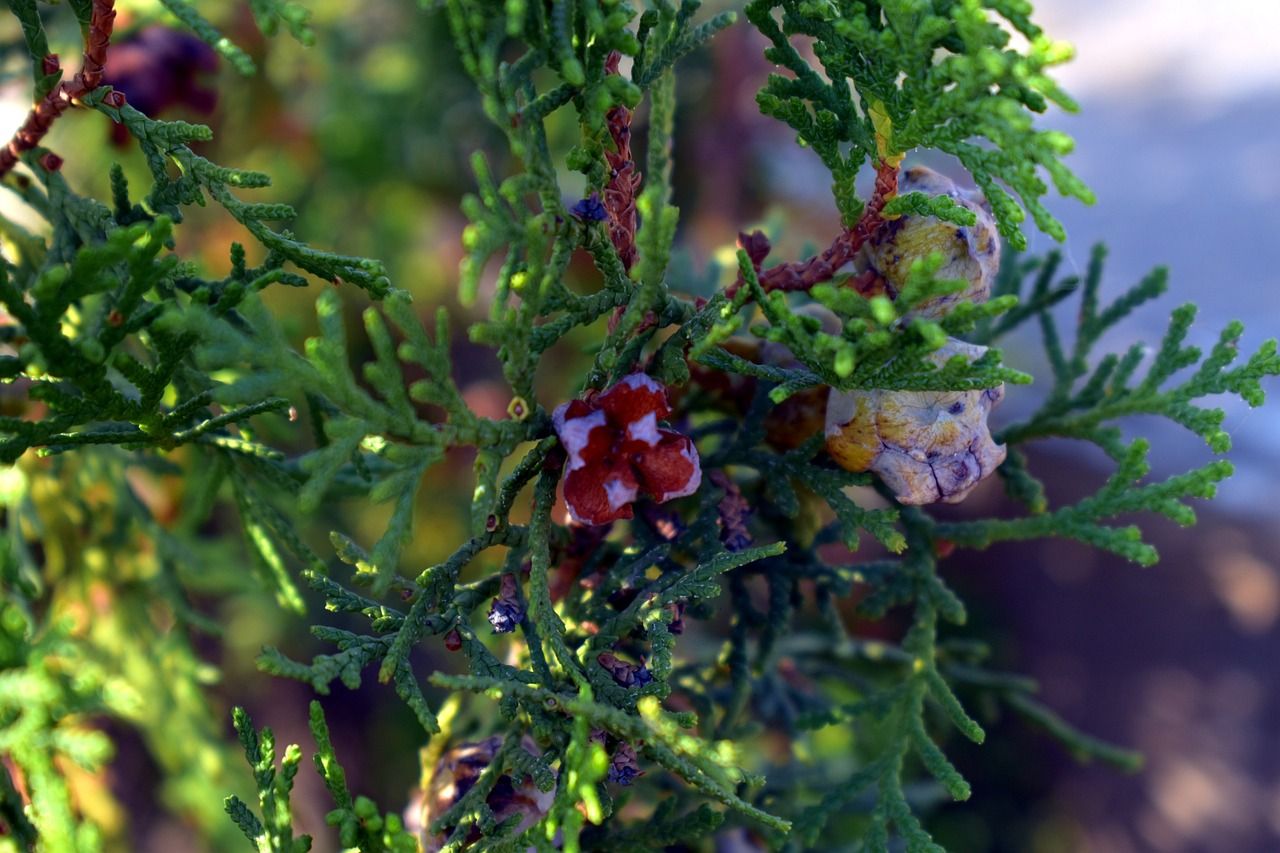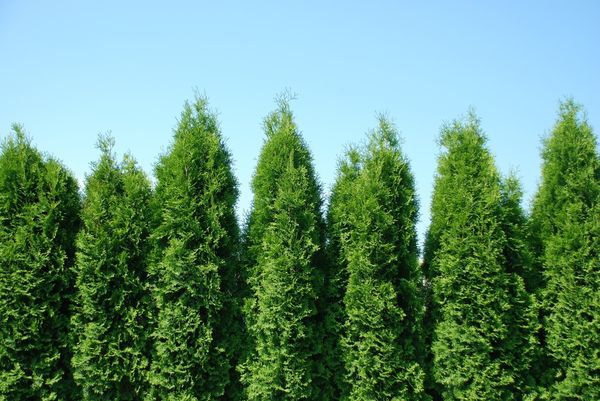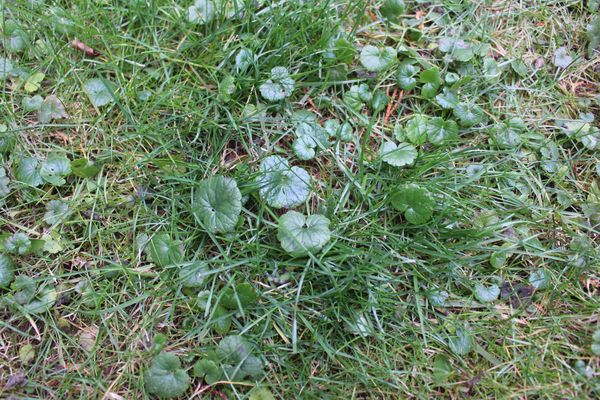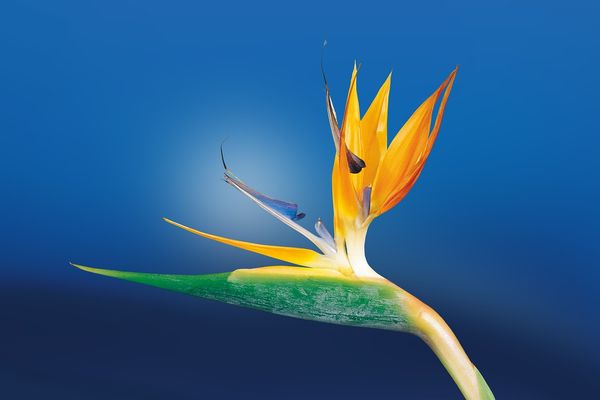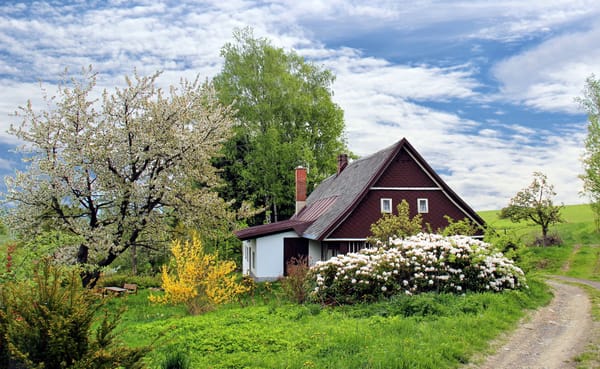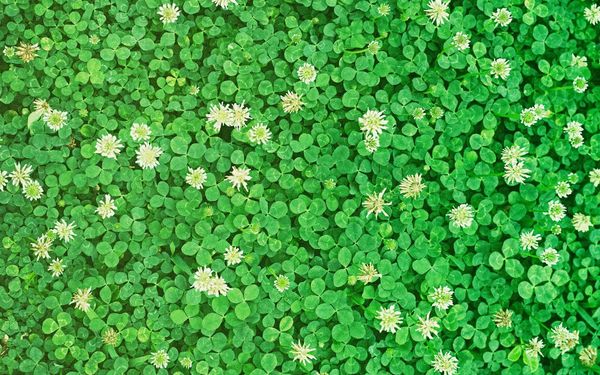The Arborvitae has a storied past that dates back to the sixteenth century. To display their riches and rank, royals and other aristocracy adorned their expansive, costly gardens with these bushes.
We're more pragmatic about these green monoliths now. In addition to being stunning, they are also quite helpful. Understanding what they need to survive is the most excellent approach to guarantee their health and vitality, whether by defining property boundaries and entryways or sculpting creative and attractive designs. And that includes determining which arborvitae fertilizer is ideal for your specific bushes and growth circumstances.
Top Two Arborvitae Fertilizers
If you need high-quality nutrients quickly, the two Arborvitae fertilizers I've selected below are ideal for use on Arborvitae and other evergreen plants.
The Best Fertilizer for Your Arborvitae: A Guide
Evergreen conifers called arborvitaes generate cones right from swollen buds. Since they don't produce flowers or fruits, the development of the trunk, branches, and leaves will be the main focus of all ingested nutrients.
Nitrogen drives this endeavor and supplies all plants' building ingredients for cell formation. Therefore, you should pick an NPK high in nitrogen for your evergreens. For this reason, I like to treat evergreens using a high-nitrogen fertilizer (13-3-4) instead. However, phosphorus and potassium are necessary for nitrogen to function. Both general tree fertilizer 4-2-4 and an all-purpose fertilizer 10-10-10 will work admirably. This powerful partnership is completed by supporting secondary nutrients like calcium, magnesium, and sulfur (arborvitaes love acidic soil).
The most excellent fertilizer does more than provide the nutrients a tree or plant needs to grow. It also concerns how the fertilizer benefits both you and the tree. I usually advise using a slow-release fertilizer as a top dressing, either in the shape of spikes or granular feed. With tip, you can provide a continual supply of nutrients throughout the most crucial developing phases by feeding once every eight weeks. Two times a year, a granular top treatment may be used in the spring and the autumn.
N-P-K ratio of fertilizer for Arborvitae
With the proper ratio of each macro and micronutrient in a combined NPK, Arborvitae grow. The "Big Three" are potassium (K), which supports effective nutrient and moisture circulation and fosters disease and insect resistance, phosphorus (P), which helps solid roots and lush foliage; and nitrogen (N), which supports constant healthy development.
These statuesque topiaries need extra nitrogen to preserve beauty and structure in your garden. They are better able to absorb other nutrients when there are higher levels. So, when picking an N-P-K ratio, aim for a higher first number (for instance, 15-5-6).
Liquid vs. Granular
What makes your gardening experience simpler and more enjoyable will determine whether to use a slow-release (granules and spikes) or a quick-release (liquid). Each has advantages and disadvantages. So let's examine how they vary from one another.
Liquid Concentrate
Quick-release liquids are cost-effective, mainly if used over your whole garden. Several drinks made particularly for Arborvitae may need to be added. The quickest delivery of nutrients to the roots is the main advantage. Additionally, beverages contribute to the pH equilibrium of the soil. However, using care as unintentional overfeeding may result in root damage.
Granular
Thanks to slow-release granules, you can concentrate on other tasks more since you know your plants are getting enough food. Granules are highly concentrated and consistently provide hand-measured nutrients for three to six months without water activating them. Additionally, a granular alternative is less likely to leak away from the plant's roots.
Fertilizer Spikes
Slow-release spikes are handy. Because the nutrients are released gradually over time, fewer applications are necessary. They provide a far lower danger of runoff and root burn since they are pre-measured and compact for simple storage. Not to mention, it will be easier on you. Additionally, it is optional to water them since soil-dwelling bacteria spontaneously release nutrients.
Reviews of Arborvitae Fertilizer
A comprehensive list of the top 9 fertilizers for arborvitaes is based on extensive study. They enable you to choose what is best for your trees and provide them with the encouragement they need for lush, healthy outcomes.
1. Jobe's Evergreen Fertilizer Spikes 13-3-4
Pros
- No strong odor.
- NPK is made especially for evergreen plants with a lot of nitrogen.
- For the duration of the season, just two applications are required.
- Enhances soil quality.
Cons
- It could be challenging to push into the dry, deep soil.
The pre-measured, simple-to-use Jobe fertilizer spikes are created especially for nitrogen-loving evergreen trees and shrubs. With the assistance of this tangle-free, slow-release spikes, my arborvitaes consistently flourish. They supply steady nutrition gradually over time, down to the roots. Additionally, there is no unnecessary runoff or smell with them.
I just recently planted Arborvitae to my landscape by lining my driveway with a row of 3-year-old plants. I've always used Jobes's fertilizer spikes, and I'm amazed at how much thicker and bigger they've become.
If the ground is hard, wash your hands well before using. I start by attaching the protective plastic cover to the end of the spike, as you can see in the pictures I took above. Points should be inserted into the ground 30 inches from the tree trunk. According to the 's diametertree trunk's diameter, one point is needed for every inch of diameter; for a complete set of instructions, please refer to the figure above.
Customer evaluations: Many new arborvitae gardeners say they are happy with the outcomes they get from employing these spikes. Shrubs that are newly planted respond more quickly and produce healthy growth. I give this product 4.7 out of 5 stars and select it as the best deal.
2. Miracle-Gro Tree & Shrub Fertilizer Spikes 15-5-10
Pros
- Positive Outcomes with sick trees.
- No chance of root burn or excessive fertilization.
- Many tree varieties, including some blooming trees, benefit from the NPK ratio.
Cons
- It must be kept in an excellent, dry location.
This Miracle-gro slow-release spike option ranks second among the finest fertilizers for arborvitae due to its outstanding ability to nourish sick plants growing in poor soil. The enhanced nitrogen concentration makes all of this possible, promoting healthy, long-term development and vitality.
After they had taken a bit of a beating from the late frost, I tried these out on two of my arborvitae last spring. They had a worn-out, drained appearance, and the foliage was beginning to show some indications of deterioration. But just a few weeks after driving these spikes into the ground, they were springing back and starting to show symptoms of new growth.
They didn't exhibit any symptoms of root burn either, which was surprising given that they were young plants. Win/win! The spikes lasted for about six weeks, but because of the heavy rains, they must have dissolved more quickly than you could have anticipated. So, I believe7-8 weeks under normal circumstances.
If the ground is solid, moisten the area well before using. In the late autumn or early spring, either hammer or press the spikes into the bottom close to the base of your shrub. Use one spike for a 4-foot drip line; for a 6-foot drip line, three points; and for an 8-foot drip line, five points. Around eight weeks passed between each surge.
Customer feedback indicates that providing their sick shrubs with this nitrogen-focused NPK meal has shown excellent results. Trees and shrubs that struggled to hold onto their leaves in the summertime in the summertime are now lush, green, and robust. I give Miracle-Gro spikes 4.5 out of 5 stars.
3. Vigoro Tree, Shrub & Evergreen Plant Food 16-4-8
Pros
- Choices for simple application and storage.
- For improved nitrogen and ongoing nutritional support; time-released.
Cons
- Use in soils high in nitrogen may not be advised.
Vigoro is the source of this specific option. It provides a different way to apply fertilizer spikes while promoting the same abundant and colorful outcomes. Given that it has a time-released nitrogen function, it is meant to prolong both the growth volume and the foliage's brilliance. His fertilizer for arborvitae has an N-P-K ratio of 12-5-7 and a special ingredient that enhances soil quality and stress tolerance. It is ideal if your soil lacks nitrogen or your environment is prone to temperature swings. The next time we have a long winter, or if I see any indicators of nitrogen deficit, such as yellowing leaves or leaf drops, I will sprinkle it around the base of my arborvitae. Visit Amazon.com to see Vigoro Trees, Shrubs, and Evergreen Plant Food.
Use pepper granules in the root zone of the soil in the early spring and late autumn.
Customer evaluations: Customers from all segments of the retail gardening market are explaining why they keep buying Vigoro's fertilizer time and time again. The application process is simple and offers excellent value. Vigoro gets 4.5 out of 5 stars.
4. Maxicrop Seaweed Extract Organic Concentrate 6-2-4
Pros
- No offensive odor.
- Enhances soil quality while promoting wholesome growth.
Cons
- For bushes that require a lower pH, not recommended
This liquid feed option from Maxicrop, which contains seaweed extract, encourages robust root growth and establishment from seedling to maturity to aid your arborvitaes in thriving organically. It is also excellent at restoring health to sick plants. Maxicrop Original Seaweed Extract is available for purchase here.
I really appreciate this fertilizer because it is gentle enough to use every week and can be integrated into my usual garden fertilization routine. I work to maintain the soil's nutritional levels by routinely composting and mulching, which reduces the chance of root burn. In the summer, it may also lessen the chance of heat exhaustion.
This is excellent for blooming shrubs, fruit trees, and vegetables in addition to your arborvitae. Thus, it offers excellent value for use across the garden.
How to use: Mix 3 tablespoons with 4 liters (1 gallon) of water and spread once a week.
Customer Reviews: Gardeners report fading shrubs suddenly turning brilliant green with new growth as this organic choice improves even in the most challenging soil types. 4.7 / 5 stars.
5. Miracle-Gro All Purpose Shake N’ Feed 12-4-8
Pros
- Pellets with a regulated temperature for ideal feeding intervals
- Beds, borders, and containers are ideal.
Cons
- Not for use in potted plants with a diameter of less than 6."
This Miracle-Gro slow-release version calls for just one application of these nutrient-rich granules throughout the growing season. And with a 12-4-8 NPK will provide your arborvitae with the proper quantity of beneficial assistance for up to 3 months. It does a terrific job of enhancing the soil because it feeds those crucial bacteria.
Due to its suitability as a fruit, flower, and vegetable fertilizer, I recommend this as a fantastic all-purpose fertilizer for gardens.
How to Use: This is my go-to recipe for a mess-free, no-mixing solution when I need to get some fertilizer in the ground quickly. Spreading items evenly is made simple by the "easy shake" lid. I only need to apply the recommended quantity of dirt to the area around the roots. Both in the late autumn and early spring.
Customer Reviews: On several forums and review boards, people exclaim, "Twice the plant size for the price!" This product has earned 4.6 out of 5 stars with no mixing or measurement.
How To Feed Arborvitae
Knowing when, why, and how to feed is the next step after considering some excellent feed options. To learn more about each, keep reading.
Fertilizing Arborvitaes
Nutrients are less plentiful in a well-maintained garden than in the wild. I am leaving them to fight each other for food. All the nutrients for potted arborvitae plants and bushes come from us. Finding the finest arborvitae fertilizer is crucial because of this.
Arborvitae Fertilizer Burn
More nitrogen might be beneficial for these bushes. But too much will cause root and leaf burn. To avoid this, choose the appropriate feed and follow the correct application procedures. It's crucial to follow fertilizer instructions to retain health and vigor. Particularly if selecting a liquid option. Otherwise, irreparable harm could happen.
When Should Arborvitae Trees Be Fertilized
The best time to feed your arborvitae is very early in the spring before it "wakes up" or in the late autumn when your shrub enters its dormant state. This ensures they direct their energy into the root system in preparation for new spring development. Fertilizing when a plant actively grows will only promote unreliable and unhealthy growth.
Tuja arborvitae Unless they are densely planted with other plants, Green Giant Thuja bushes proliferate and need relatively little fertilization compared to other trees and shrubs. Feed your Thujas once in either late autumn or early spring to prevent them from having to compete for nutrition. For green giant arborvitae, good spacing is essential to successful development.
Arborvitae Emerald Green
Compared to its enormous predecessor, the smaller, faster-growing Arborvitae Emerald Green can need a few more feedings annually. Beginnings of spring, summer, and fall need to provide a consistent flow of nutrients to keep your green beauty over the winter.
Arborvitae Fire Chief
The smallest and slowest growing arborvitae is the Arborvitae Fire Chief, with its gorgeous gold and scarlet tips. Overfeeding, which occurs when efforts are made to accelerate the growth rate, is the most frequent problem with this kind. Interestingly, the Thuja, the most significant plant on our list, should be fertilized at the same time as these. once in the early spring or late autumn.
Final Thoughts
So, there you go. As promised, here is a ranking of the top 9 arborvitae fertilizers available today. Based on my gardening expertise and in-depth analysis of consumer reviews from various sources.
Now, to choose the optimum NPK formula, think about where your arborvitae is planted and the state of your soil before clicking on the offered links.
Jobe's fertilizer spikes are easy to apply and provide long-term, slow-release advantages. Therefore I strongly suggest them. Alternatively, you may use Miracle-Gro Fertilizer Spikes, which are just as simple to apply as Jobe's and are excellent for freshly planted arborvitae. Additionally, I like Vigoro's Granular Feed for Tree, Shrub, and Evergreen Plants. This one aids weak plants and shrubs in growing solid roots.
Whichever option you choose, caring for your historic evergreens and providing them the support they need will always be worthwhile.
FAQs
How to Grow Arborvitae That Is Thicker?
The most excellent strategy to optimize growth potential is not to overfertilize, which might harm your shrub. Pruning at the right time and using the correct application techniques can healthily encourage new growth.
Can a brown evergreen resurrect?
Yes. Browning might happen due to a pest infestation, a high salt content in the soil, winter burn, or drought. Complicated trimming, eliminating any brown growth, and regular, thorough watering should aid in its recovery. This information may be useful. How come my evergreen is becoming brown?
Are arborvitaes suitable for coffee grounds?
Although a natural nitrogen source, coffee grounds won't provide your arborvitae the complete quantity needed for optimum development. They are far more efficient when added to the soil as a compost component.
Testing and Maintenance
Conducting a soil test before applying fertilizer to your Arborvitae, also known as Thuja occidentalis, northern white cedar, or swamp cedar, is crucial for identifying nutrient deficiencies. This step ensures that the selected fertilizer, whether it's a granular or liquid form, matches the specific needs of the soil. Well-drained soil is ideal for Arborvitae, as it helps prevent issues like branch dieback. When applying fertilizer, it's important to follow the instructions on the fertilizer container carefully. Ensure that the fertilizer dissolves properly and reaches the roots. For optimal results, water deeply after fertilization to help the nutrients penetrate the soil and reach the plant's roots."
Arborvitae, known for being low maintenance, still requires attention to thrive, especially when growth begins in the spring or if the plant is growing slowly. Direct sunlight and proper fertilization play a key role in its health. When fertilizing Arborvitae, it's important to choose a time when the plant is not in active growth, such as early spring or late fall. This timing allows the fertilizer to work effectively, providing the nutrients the plant needs without causing stress. Regular fertilization, in line with the plant's natural growth cycle, ensures that your Arborvitae, whether it's a northern white cedar or swamp cedar variety, remains healthy and vibrant throughout the year.
Conclusion
Fertilizing arborvitae is a crucial aspect to maintain the health and vigor of these narrow leaf evergreen trees. Implementing a routine, whether you prefer to fertilize arborvitae with granular fertilizer like Scotts Evergreen Flowering Tree or utilize liquid fertilizers, contributes to a lush green foliage and promotes the overall growth of your arborvitae tree. In particular, newly planted arborvitae trees significantly benefit from the initial boost these fertilizers provide, aiding in their establishment and overall vitality.
For flowering trees, including arborvitae, the Scotts Evergreen Flowering Tree offers an excellent option, serving as a continuous release plant food, well-adapted to their unique nutritional needs. Liquid fertilizers, on the other hand, offer quick absorption, offering an immediate nutrient boost to your arborvitae. To ensure the long-term health and protection of your shrubs, consider using a product like Shrub Protect. This supports the immune system of your plants, helping them to thrive and maintain their vibrant green hues.
No matter which product you choose, remember that the best arborvitae fertilizers are those that cater to the needs of your specific plant, location, and soil type. With the right care, your arborvitae will be well-equipped to flourish, showcasing its lush green foliage for years to come. So, be diligent, be observant, and let your arborvitae shine with the health and vitality it deserves.

